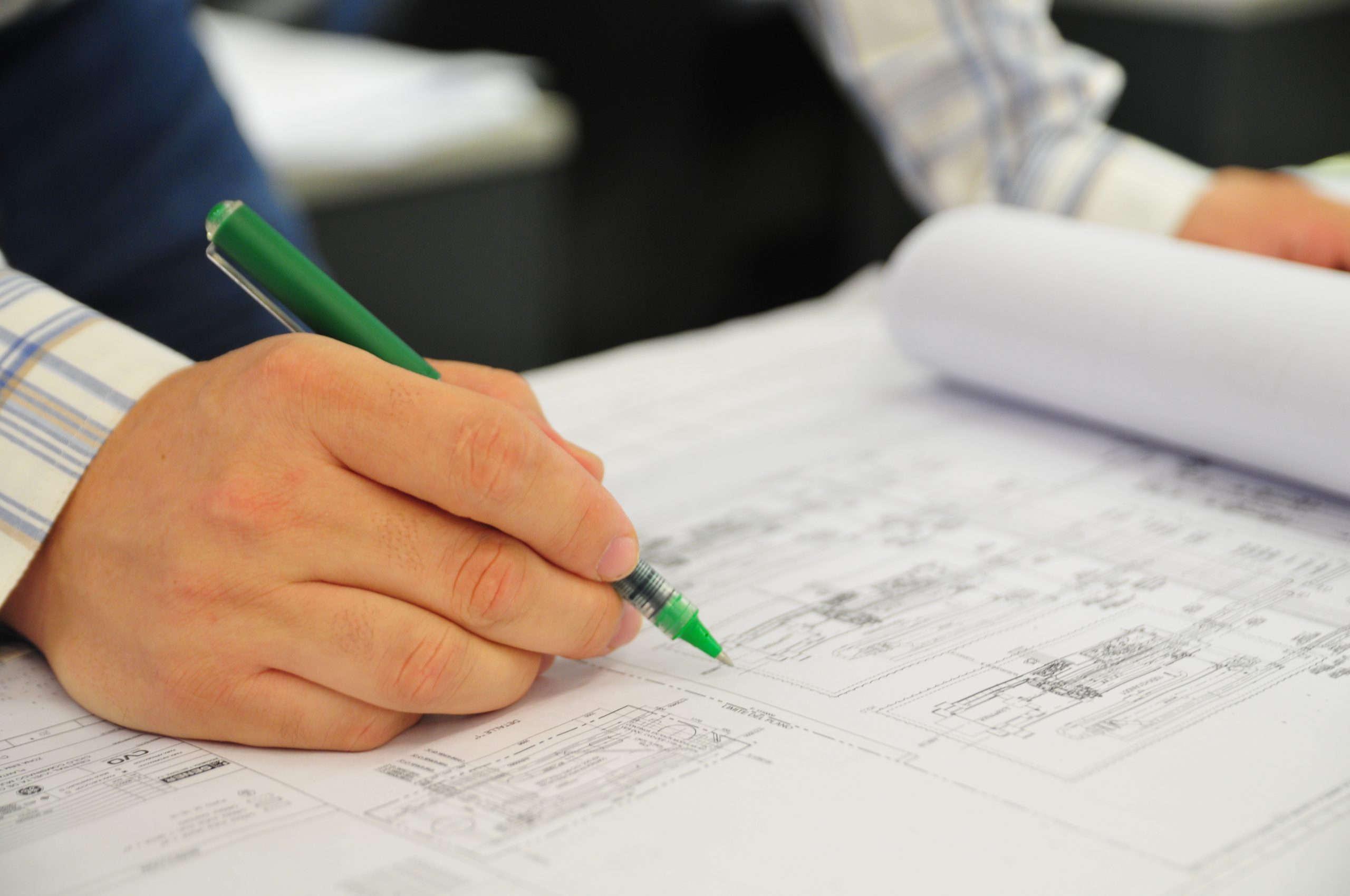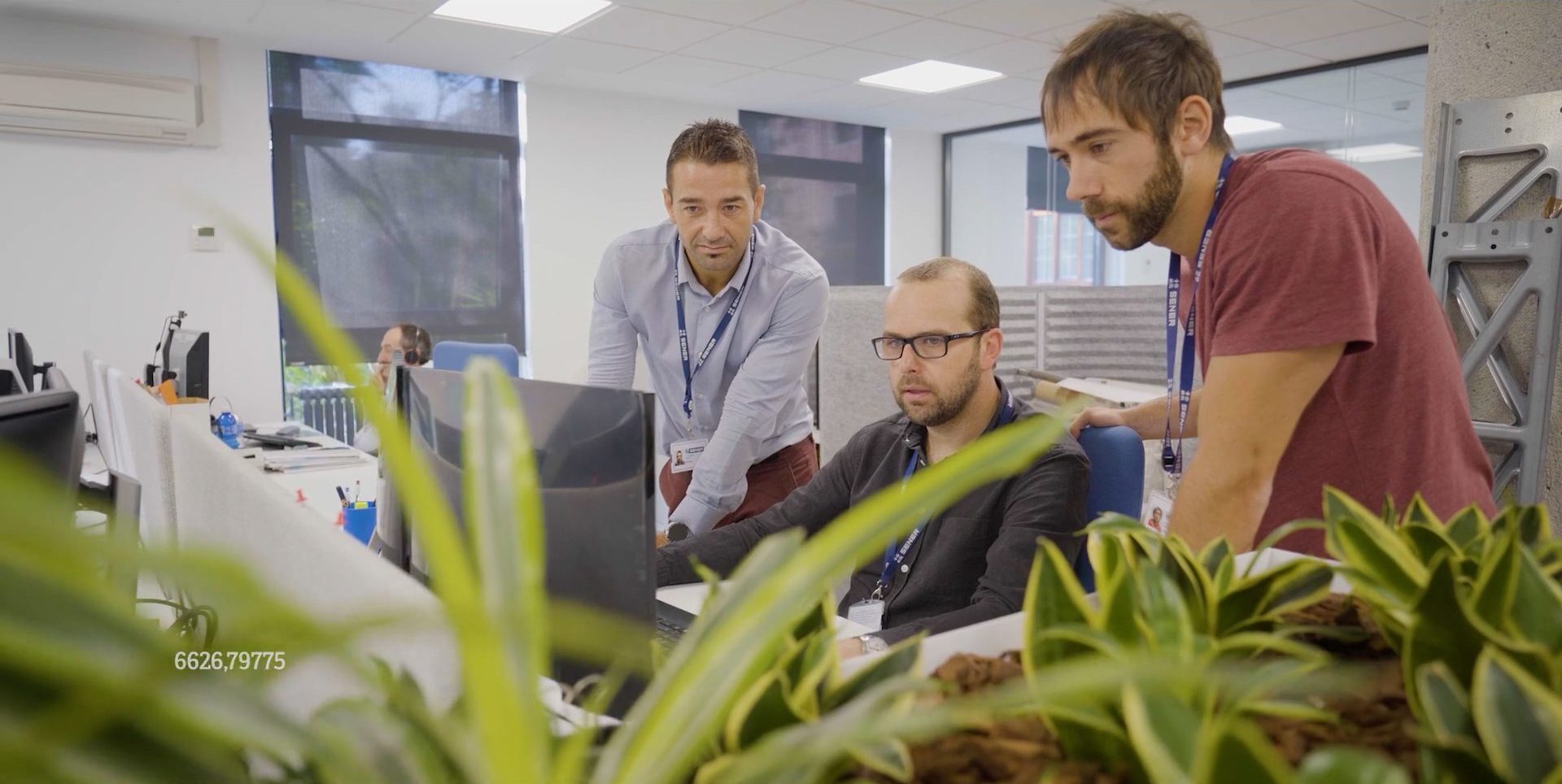




 About us
About us About us / section
About us / section Markets
Markets Markets / section
Markets / section Careers
Careers Careers / section
Careers / sectionThe ECOFOSS project is driven by a consortium of six companies with a strong technological component: Navantia Seanergies, Red Eléctrica, Sener, Ocean Ecostructures, Ditrel and Uptech Sensing. The initiative is funded by Next Generation EU funds, through PERTE Naval. The tests are carried out at the Environmental Hydraulics Institute of the University of Cantabria.
The ECOFOSS R&D project, whose objective is the design of a zero-emission floating high-voltage alternating current electrical substation, has started its testing phase this month by carrying out tests with a model to validate its behaviour at sea in a controlled aquatic environment.
ECOFOSS is an innovative project promoted by a consortium of six high-tech companies: Red Eléctrica, Sener, Ocean Ecostructures, Ditrel and Uptech Sensing, and led by Navantia Seanergies, through its centre of excellence COEX Green Energies.
The floating substation being developed thanks to this project will allow the electrical production of offshore wind turbines, installed in deep water areas far from the coast, to be integrated into the electrical system for subsequent distribution to consumers.
The tests that have begun consisting of the experimental analysis of the behaviour of the substation at sea, thanks to the study of the behaviour of its 1/40 scale model in a tank where ocean conditions are reproduced. These results will then be compared with those previously obtained from the simulations carried out in the design phase.
These tests will allow the validation of the design of the substation and its operation in locations with specific wind, sea and current conditions. The dynamics of the mooring system, as well as the dynamic power cables, and their response to different sea states and specific seabeds will also be tested. However, an experimental database will be generated for the calibration and validation of the numerical models used for the concept design.
The hydrogen plant will be validated in March
This project is especially innovative as it is the first zero-emission substation design: It includes a renewable hydrogen generation and re-electrification plant, which will feed the substation’s auxiliary services in maintenance and emergency situations in which it cannot obtain electrical energy from the wind farm.
The hydrogen plant tests will be carried out in March, on a test bench that is being developed at the COEX Green Energies headquarters located at the Navantia Seanergies facilities in Cartagena.
The project consortium
Each of the ECOFOSS partners brings its specific experience and knowledge to the project. Navantia, a SEPI group company that leads the project through its green energy division Navantia Seanergies, has been designing and building foundations and substations for offshore wind farms for 10 years and has accumulated knowledge and experience in the hydrogen sector. Red Eléctrica – a subsidiary of Redeia – is the operator and transporter of the Spanish electricity system, providing its knowledge and experience in substations and submarine links, always ensuring a quality and safe electricity supply – and increasingly renewable – throughout the country. Sener, for its part, is a leading multidisciplinary engineering and technology firm, with extensive experience in the design of offshore floating platforms and naval engineering. Ocean Ecostructures is a bluetech company that, through its technology, transforms any marine infrastructure into “nature positive” spaces, regenerating marine biodiversity. Ditrel has specialized in power cable connection systems and Uptech Sensing is characterized by providing fiber optic monitoring solutions for power cables.
This is a fundamental project for the deployment and integration into the electrical system in an efficient, safe and environmentally friendly way of offshore wind energy, aligned with the objectives of the Roadmap for the development of Offshore Wind and Marine Energy in Spain, which will be developed through floating technology. Offshore wind is one of the renewable energy sources that will allow the ecological transition to be achieved, contributing to energy independence.
Financing
ECOFOSS is part of the INNCODIS tractor project, an action financed through the PERTE Naval Call, launched by the Ministry of Industry and Tourism and belonging to the Recovery, Transformation and Resilience Plan (PRTR). Financed by the European Union – Next Generation EU.
The Cantabria Maritime Engineering Tank
Managed by IH Cantabria, this infrastructure has a multidirectional wave generator, as well as a current generator that allows generating any meteo-ocean condition on a laboratory scale. With dimensions of 30 x 44 x 3 meters deep, the installation integrates Hardware-In-The-Loop type systems for simulating the action of the wind on turbines and any other type of offshore structure with the highest levels of realism and fidelity. The main purpose of the installation is to contribute to the validation of innovative structural typologies, both fixed and floating.